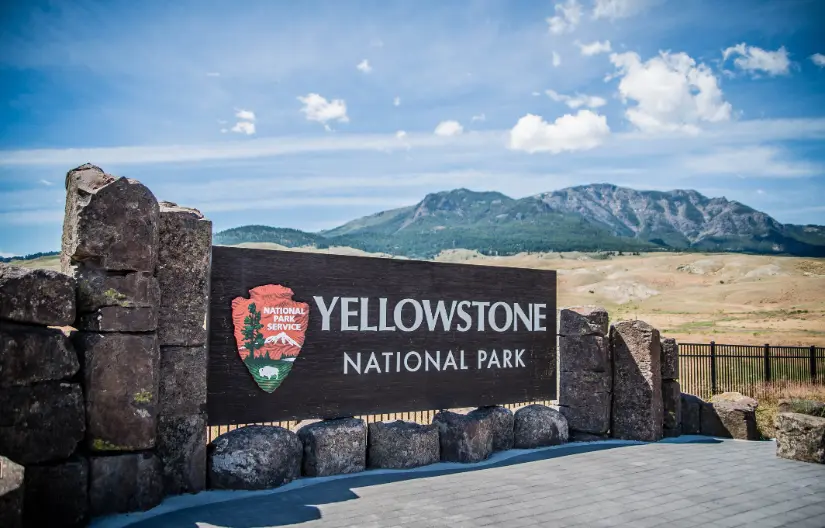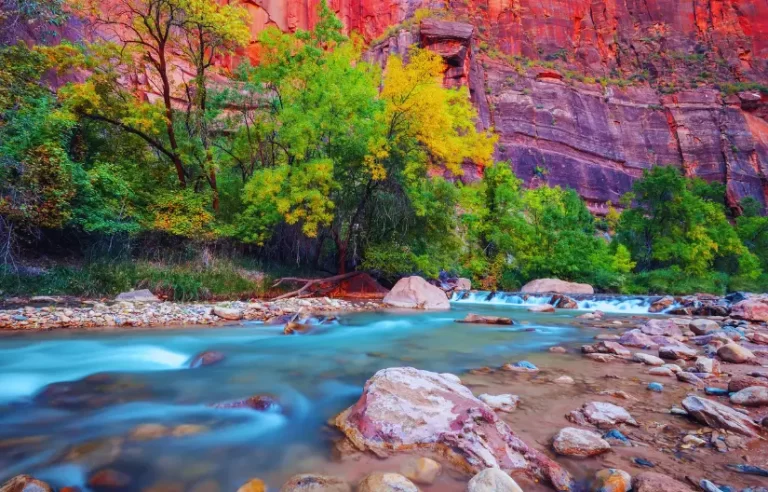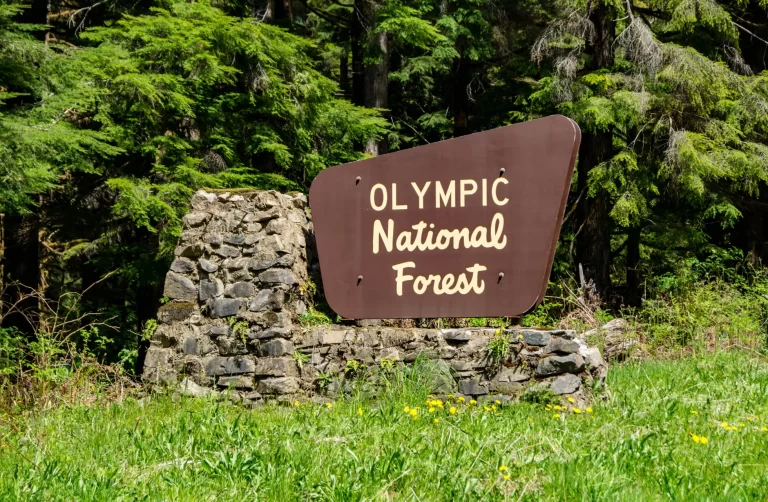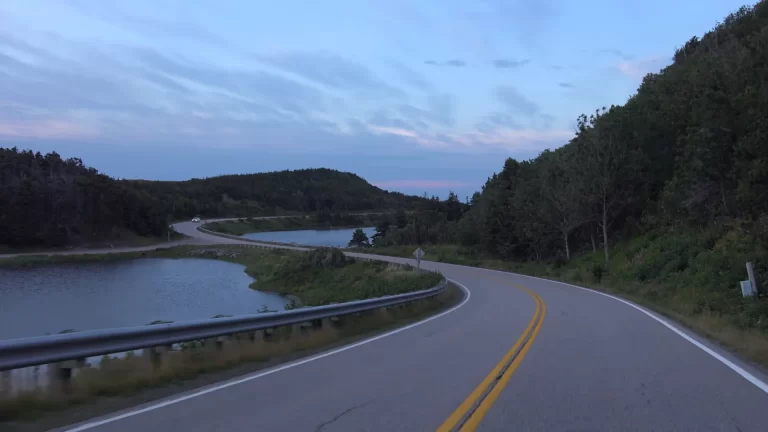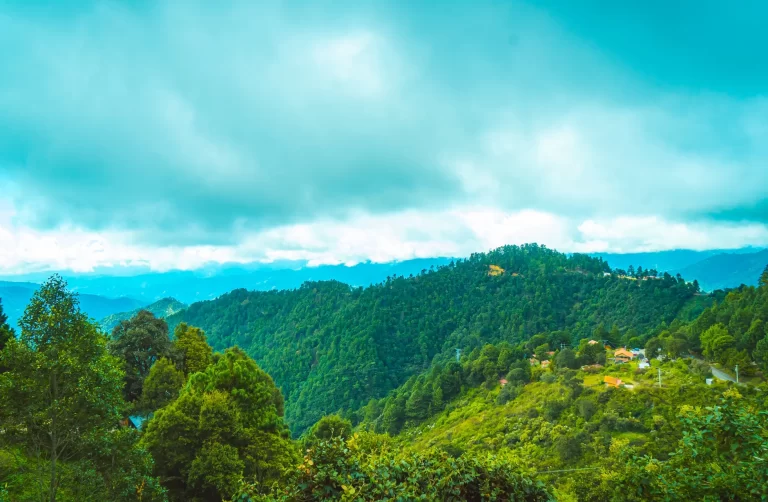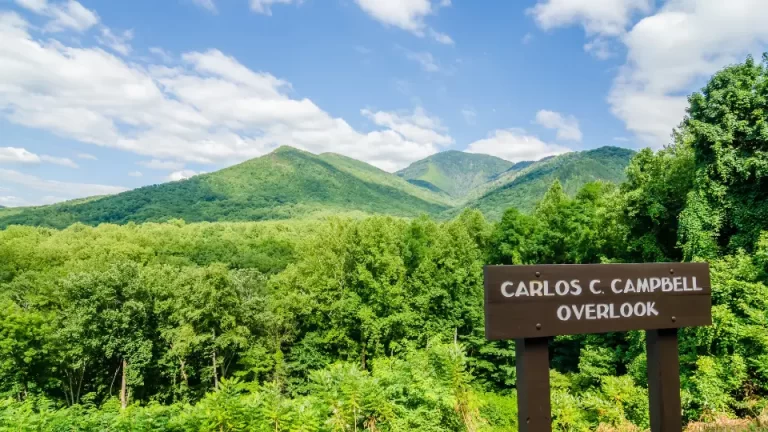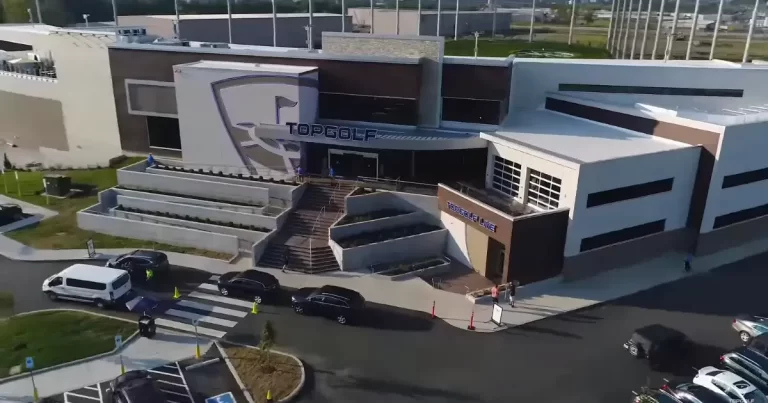Best time to visit Yellowstone National Park: Seasonal Secrets
The Best time to visit Yellowstone National Park is late April to May and September through early October. These months offer mild weather, fewer crowds, and little to no road closures. The most popular months to visit are July and August because the kids are off from school and the weather is warm enough to sleep outside.
But keep in mind that this park is no stranger to cold; in the summer, temperatures have been known to drop as low as the 30s. In the winter, expect a wide range of temperatures, from subzero digits to the high 20s. Don’t let that deter you from experiencing the breathtaking sight of steam rising from beneath a thick travel blanket of snow.
The best time to visit Yellowstone National Park is in winter.
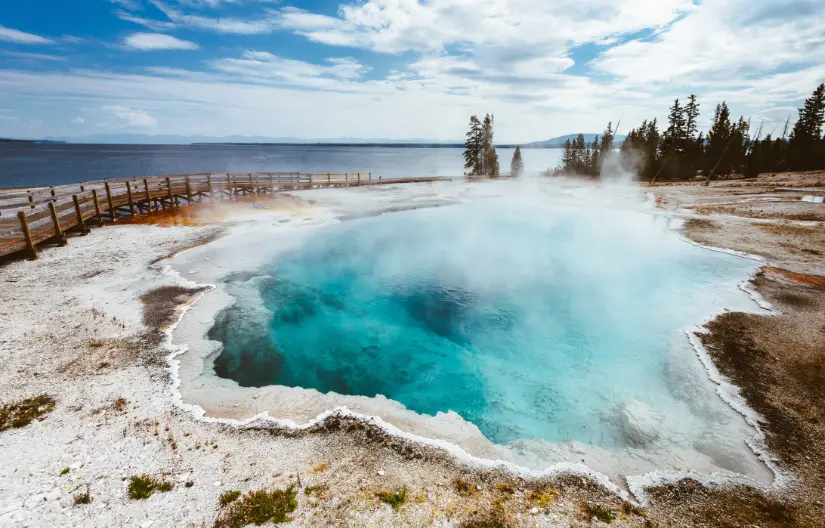
Yellowstone’s winters are merely enchanted. Thermal springs and vents release steam that condenses into frost on neighboring trees, while geysers shoot out boiling water droplets that freeze in the atmosphere and elk post-hole through a layer of heavy snow.
Winter sports enthusiasts can enjoy cross-country skiing, ice climbing, snowshoeing, snowmobiling, and exploring the ski and snow vehicle trails that wind through snowy basins like Black Sand and frozen waterfalls that glisten like frosted chandeliers. The season starts in late December and extends occasionally until March.
Pros Visit in winter
- More space to breathe: less than 3% of park visitors come at this time.
- There are many different winter activities available for everyone.
- The park’s west and north entrances are in the vicinity of lower elevations where the wildlife is present.
- Staying at the Mammoth Hotel or the Old Faithful Snow Lodge feels quaint and exclusive.
- Many chances to capture snowy scenes and animals covered in frost during the winter.
Cons Visit in winter
- Because of the heavy snowpack, most roads are closed.
- Due to road closures, almost all lodges and other facilities are closed.
- If you intend to visit Old Faithful, accessibility may be difficult and costly.
- Well, it’s cold!
- Although bears are hibernating, the Grizzly & Wolf Discovery Center still has bears on display.
Yellowstone National Park in the spring
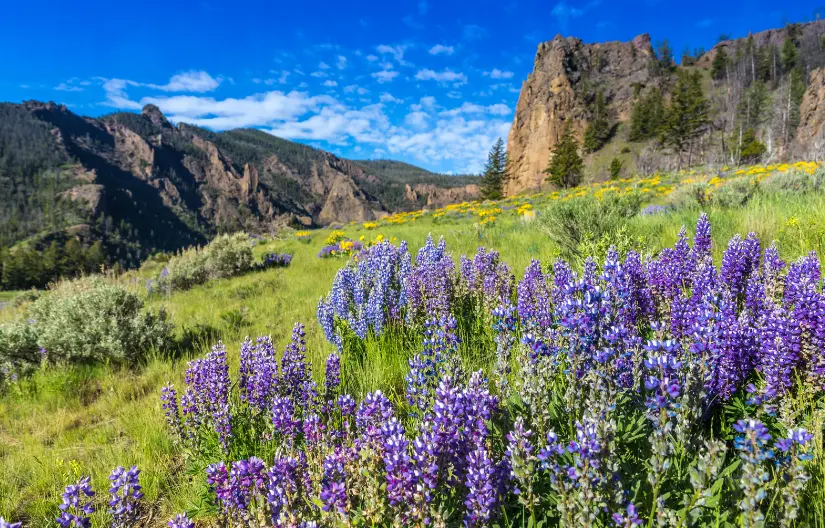
Although Yellowstone’s springtime weather is erratic, if you visit at the appropriate time, you can witness the park’s rebirth from its winter hibernation without having to deal with crowds of tourists. It’s common for temperatures to swing from the single digits to the low 60s, so bring plenty of layers.
Seasonal road closures are the main reason it’s preferable to visit towards the end of April and in May. Usually, roads open somewhere between the middle of April and the end of May. Visit the National Park Service website to see the most recent information on road closures and opening dates.
Pros of Visit in spring
- The young wildlife is visible for the first time. Very few people visit the park from April to June. March through May; as school lets out in June, things start to pick up.
- The scene abruptly shifts from a wintry paradise to a vibrant, green landscape.
- Bears emerge from hibernation at any time beginning in March and are easily observed.
- The first springtime blooms emerge from the freshly covered ground in snow.
Cons of Visit in spring
- There may be too much snow for summertime activities and not enough for wintertime ones.
- Through June, the trails may be extraordinarily muddy or snowy.
- The staggered opening schedule of lodges and facilities can make planning easier.
- Depending on the situation, the park’s roads open on different dates.
- The weather can be erratic; snowstorms can occur until May.
The best time to visit Yellowstone National Park is in the summer.
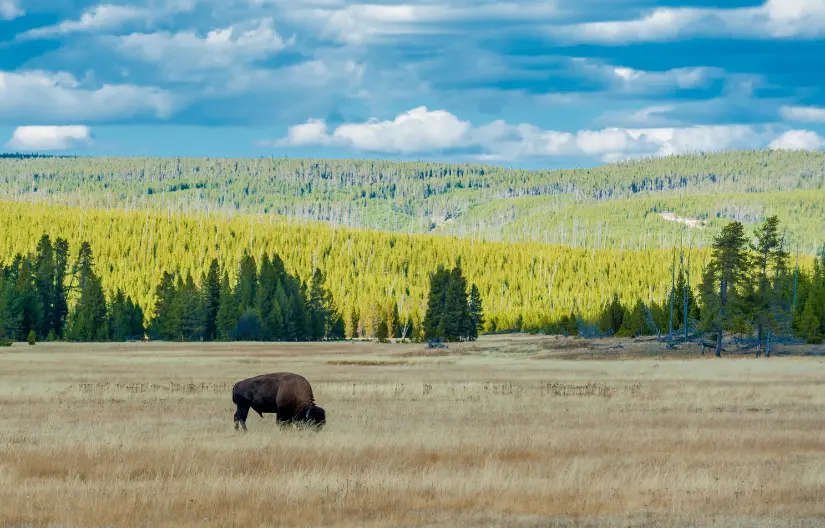
Summertime at Yellowstone means crowded boardwalks, Old Faithful eruptions that happen shoulder to shoulder, and busy roads. Families pour into Yellowstone’s entrances in large numbers now that the children are not in school.
Yellowstone is extremely popular in the summer for a reason: the park is most accessible then, with brilliant white snow covering the mountaintops, colorful wildflowers covering the hillsides, and colorful sunrises and sunsets adorning the expansive sky.
While it’s possible to see wildlife all day long in the park, those who go out early or late in the day are likely to be lucky and catch sightings during the hottest parts of the day when animals are most active, particularly in places like Lamar and Hayden Valleys. While the popular areas of Yellowstone, such as Old Faithful, Grand Prismatic, and Grand Canyon of Yellowstone, are packed.
Pros Visit in summer
- Cool, crisp mornings and warm, bright afternoons are characteristics of great weather.
- All of the following are open: trails, restaurants, lodges, entrances, and roads.
- Blooming wildflowers adorn the exposed slopes. June through August
- There is plenty of wildlife, and the best times to see it are at dawn and dusk when it’s cooler.
- You’ll have no shortage of things to do from sunrise to sunset.
Cons Visit in summer
- Summertime brings the biggest crowds, which can make visiting popular locations less enjoyable.
- Afternoon thunderstorms may ruin plans involving the outdoors.
- The air and view quality can be significantly affected by “wildfire season,” though the exact timing varies.
- There is nearly too much to do; avoid overscheduling, and remember that travel times can be lengthy.
- Because accommodations and campsites can fill up a year in advance, pre-planning and booking are crucial.
Visit Yellowstone National Park in the autumn.
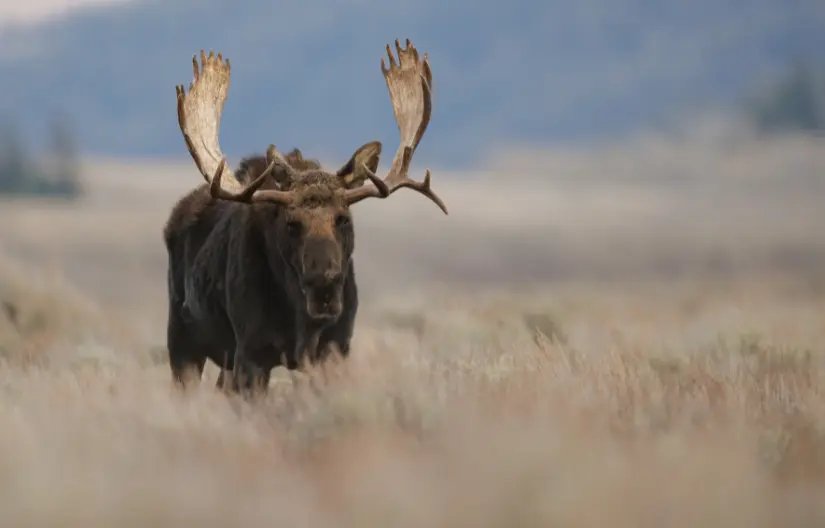
Beautiful yellows and oranges appear on the grasses and leaves. The air has a faint bite to it. And the hordes of summer visitors have gone back home. For numerous reasons, autumn is a fantastic time to visit Yellowstone National Park. However, be sure to check for road closures, which usually occur in early November, and pack appropriately for inclement weather.
It would help if you still made reservations months in advance because fall is becoming a more popular season due to fewer crowds. The best-kept secret in Yellowstone is no longer a secret. It can be particularly thrilling to visit Yellowstone in September and early October when the elk are in a rut and behave erratically. Keep your distance if you are a witness.
Pros of Visit to autumn
- A unique experience, hearing an elk bugle in the fall during rutting season
- The park’s wildlife is in the best of health following a long, successful summer.
- Deer, moose, and bull elk display their impressive antlers.
- Gorgeous photos of the aspens’ changing colors, particularly in the park’s north.
- When September turns into October, the crowds almost disappear entirely.
Cons Visit in fall
- Road closures happen throughout the season, sometimes even in an instant.
- The weather is unpredictable; you never know when the first snowfall will occur!
- The staggered closure of the lodge and facilities requires planning.
- Trails can become extraordinarily muddy or snowy, much like in the spring.
- The “entrance towns” of the park see a lot of business closures for much-needed rest.
- Any time of year is a great time to visit Yellowstone; wildlife enthusiasts, aspiring photographers, and daring explorers can all find something truly remarkable to enjoy.
FAQs for The best time to visit Yellowstone National Park
When is the best time to avoid crowds at Yellowstone National Park?
If you want to avoid crowds, the best seasons to visit Yellowstone are winter and spring. Although winter can be pretty cold, it also offers a variety of activities like skiing, snow coaching, seeing wildlife, and more. Everything is still emerging from the snowpack and starting to bloom, which makes springtime excellent.
There are still some summertime crowds in the fall, just fewer. Fall is still warm, with lots of events and campgrounds remaining open. Does this imply that summer is the worst season to go? No, not at all. In the United States, summer is a season of travel and leisure, with many people visiting parks for outdoor activities.
When is the best time to see wildlife in Yellowstone National Park?
Depending on what you want to see, different times of the year are better than others to visit Yellowstone for wildlife. The majority of wildlife gathers near rivers, which are where the roads were built when Yellowstone was first created, and the park was being developed.
It’s almost a given that you will see animals just by driving through the park. You can see bison wandering the park all year round. On occasion, bears can also be seen from the road. Although they can be challenging to spot, wolves are always present, particularly in Lamar Valley. One of the best things to do in Yellowstone is to search for wildlife!
What about Yellowstone’s roads?
The seasons can have an impact on Yellowstone’s roads. All roads are closed in the winter, with the exception of those in the north. For information on current road conditions, the Park Service has an excellent road status page. The Yellowstone West entrance is open and well-liked by snow coaches and snowmobile users.
All roads should be open in the summer, though occasionally there may be delays because of construction or bison. If you’re traveling with us, though, you don’t need to worry about that because your Austin Adventures guides will handle the details so you can make the most of your experience.

